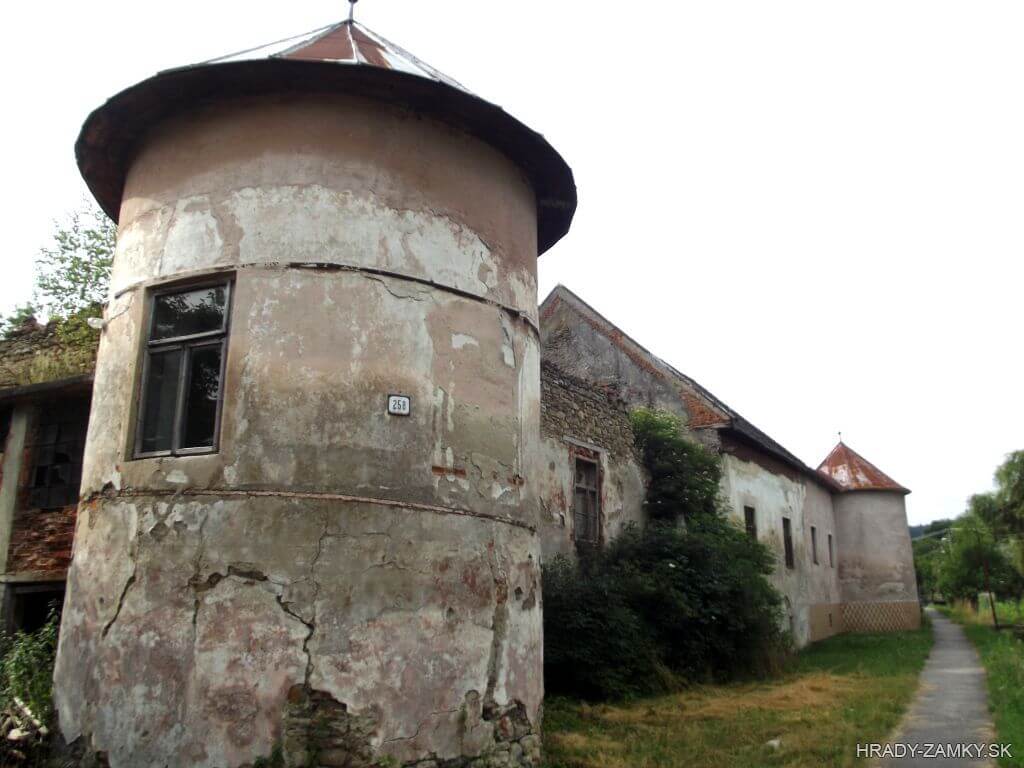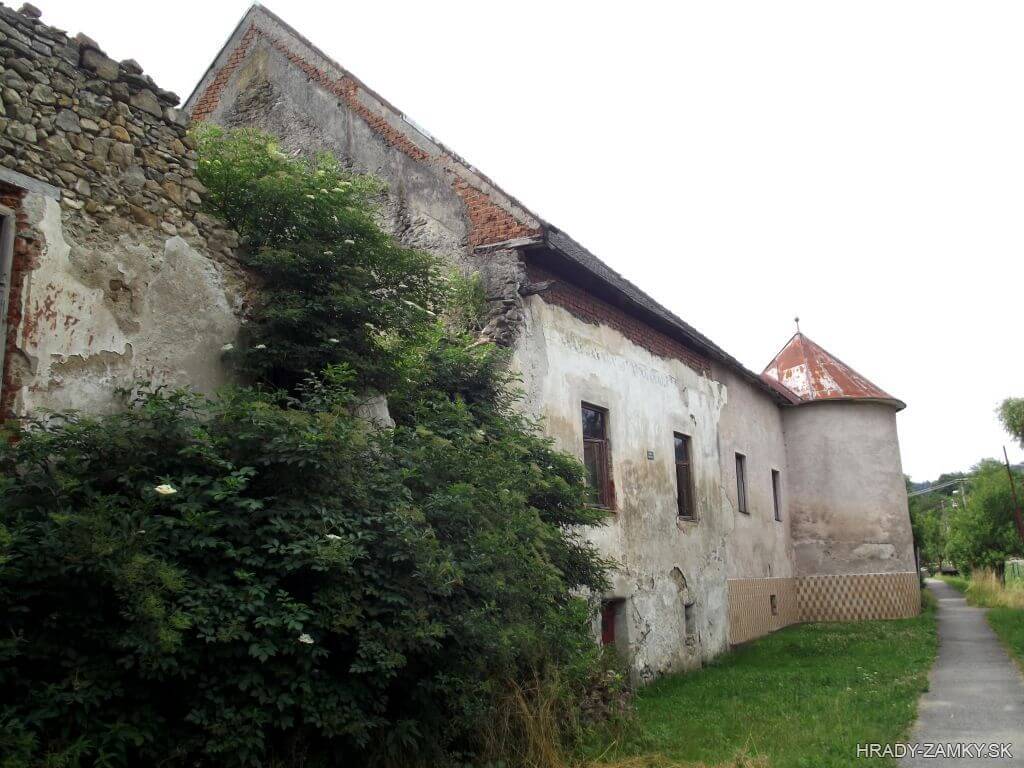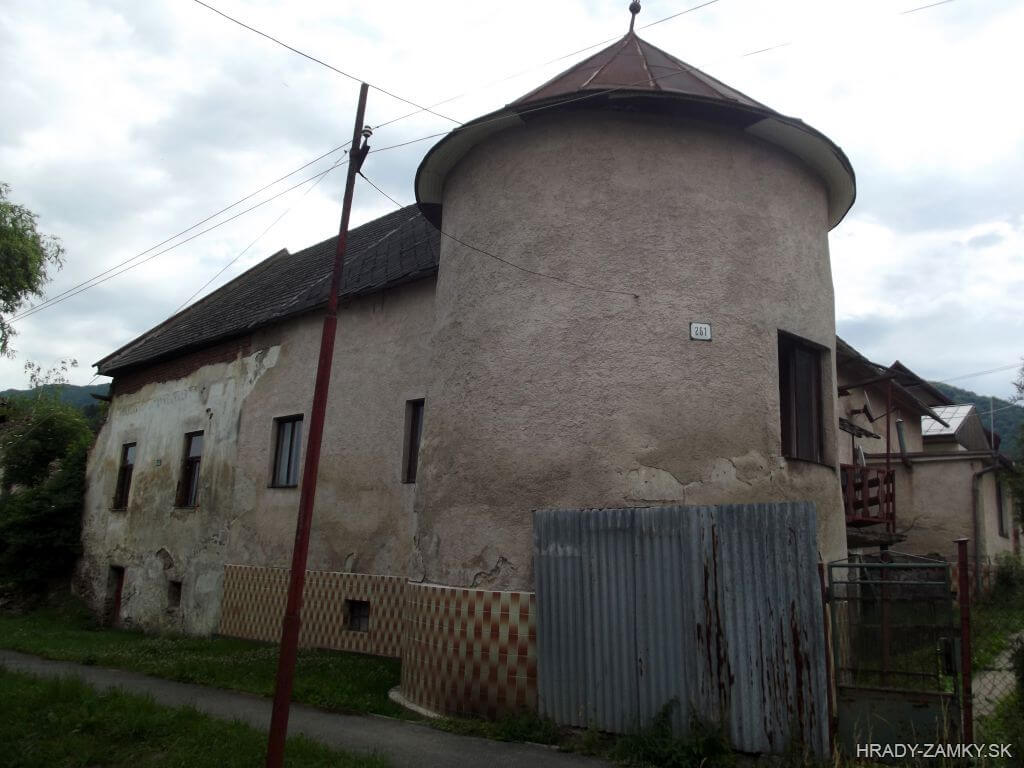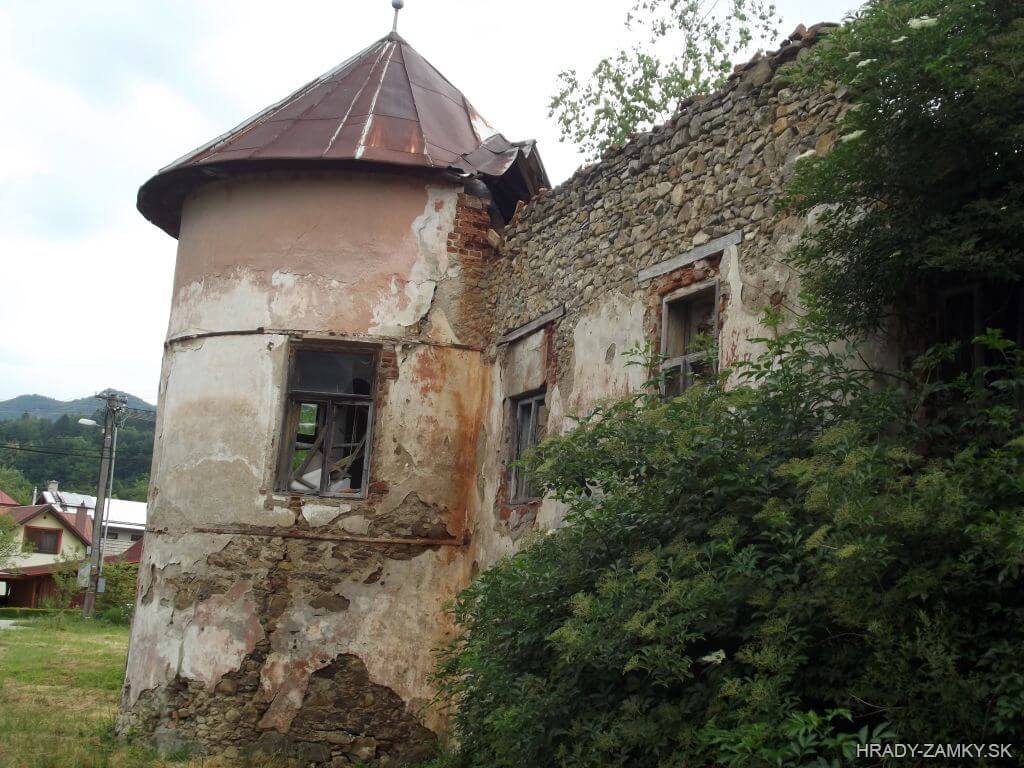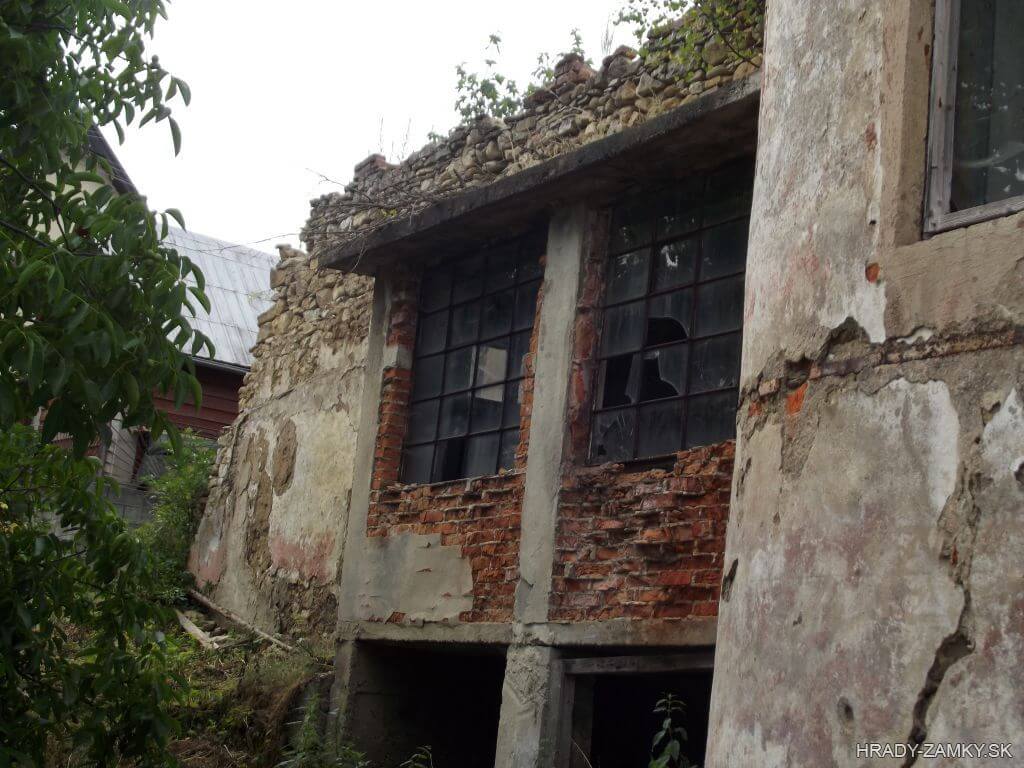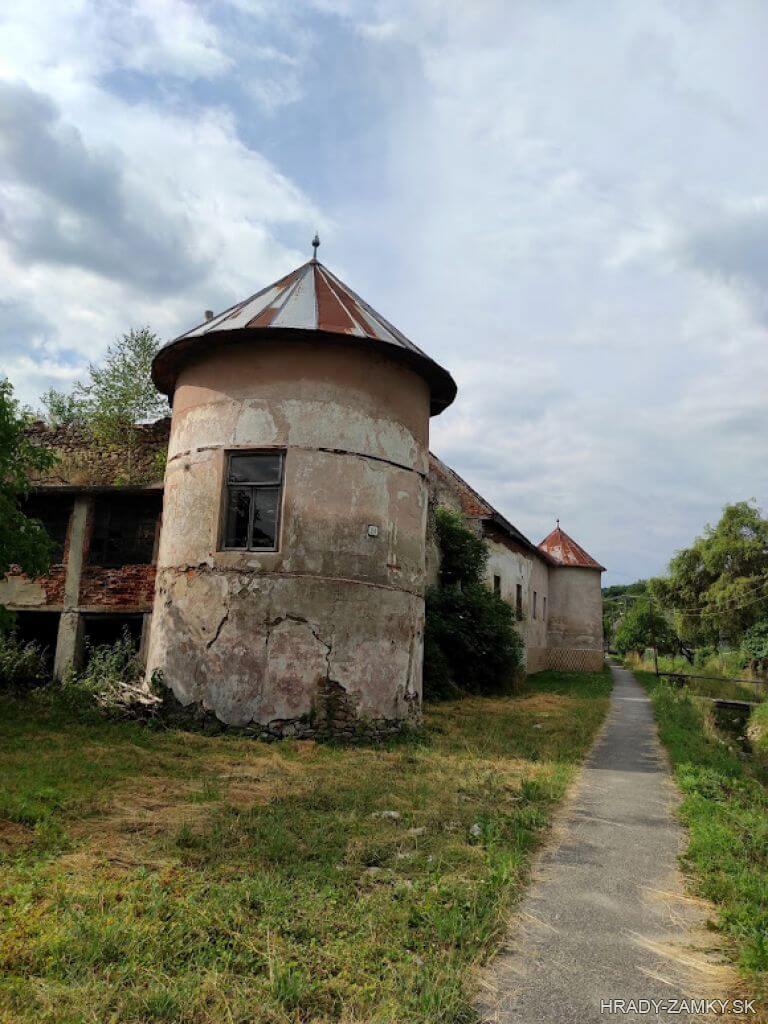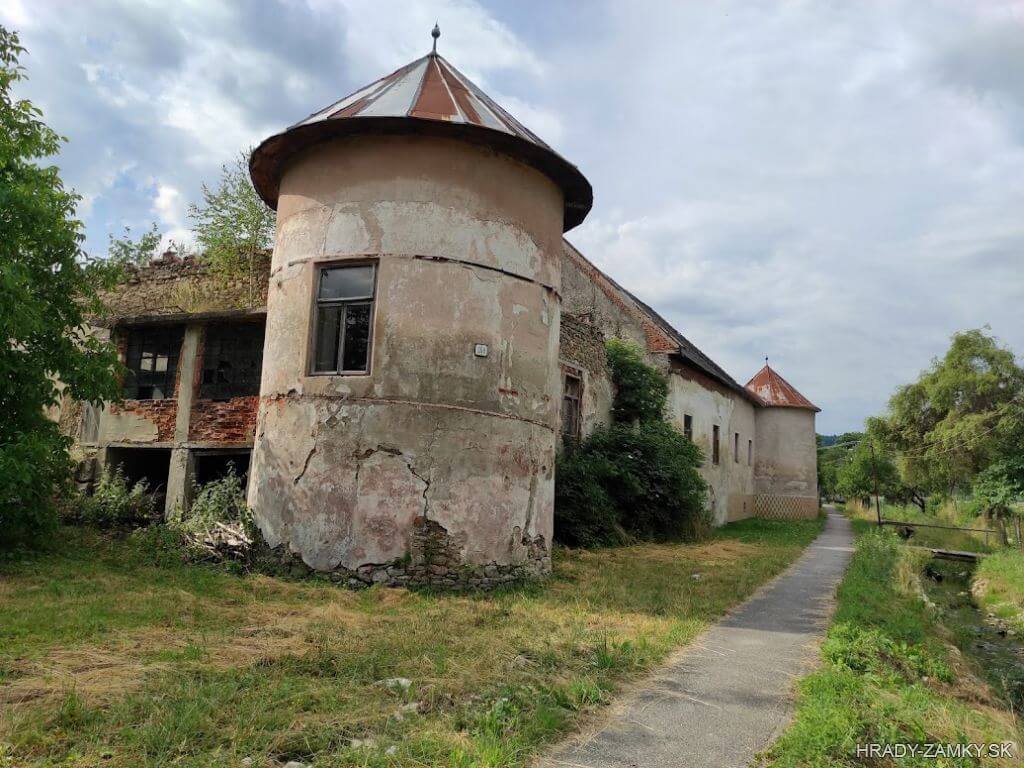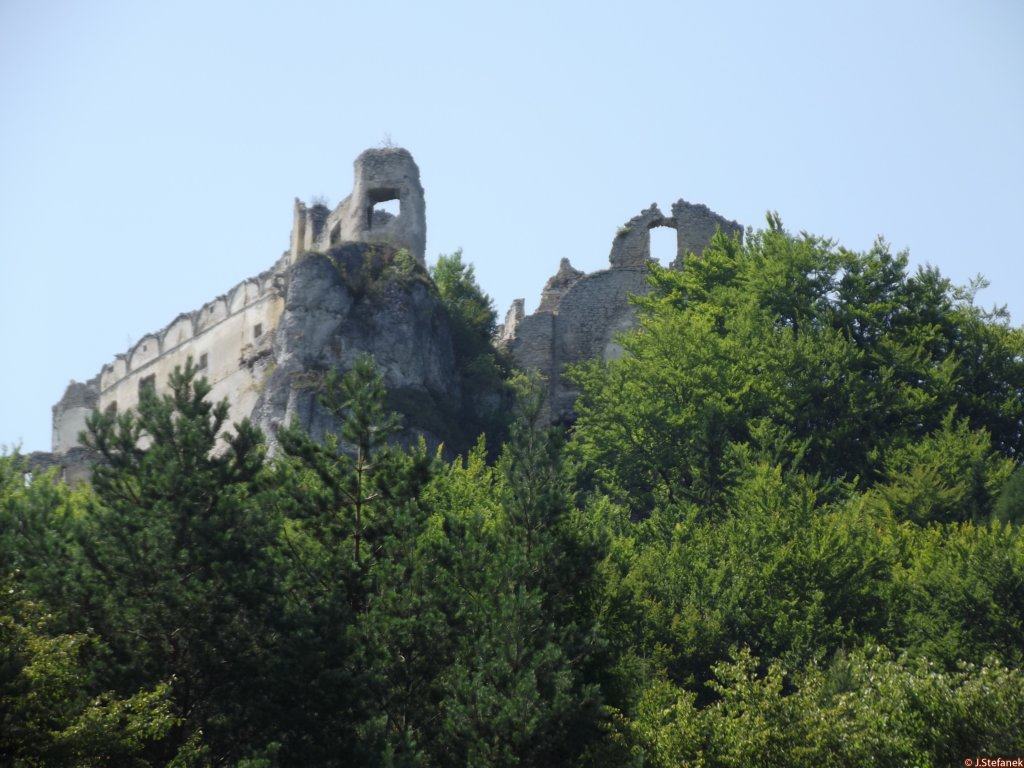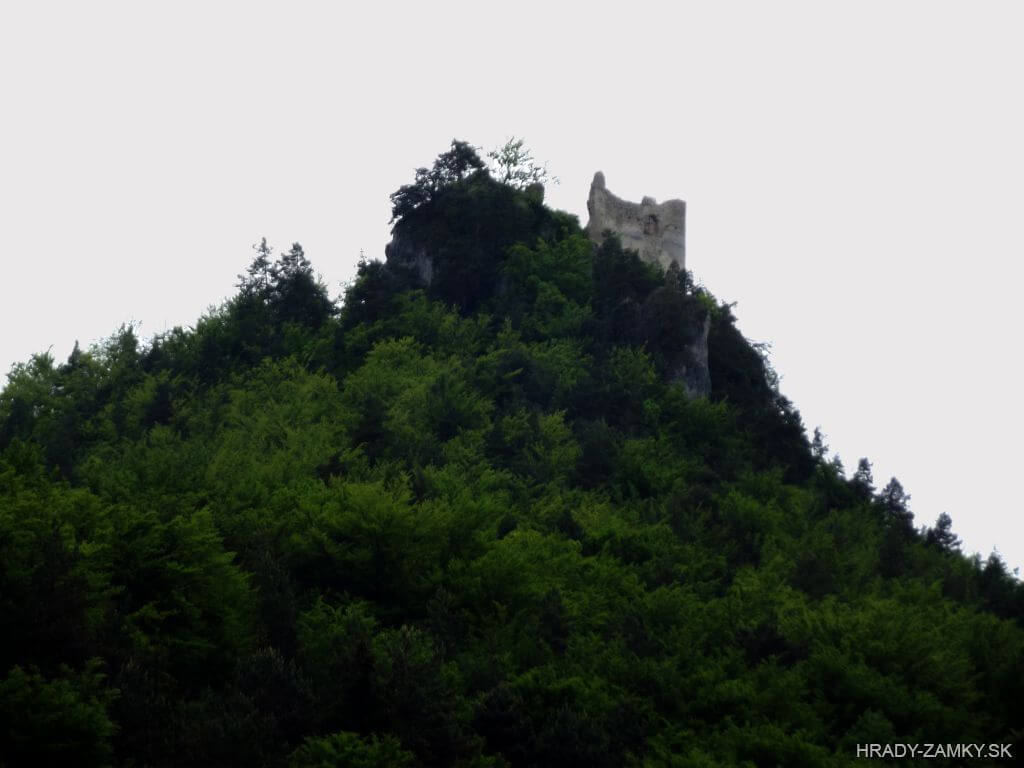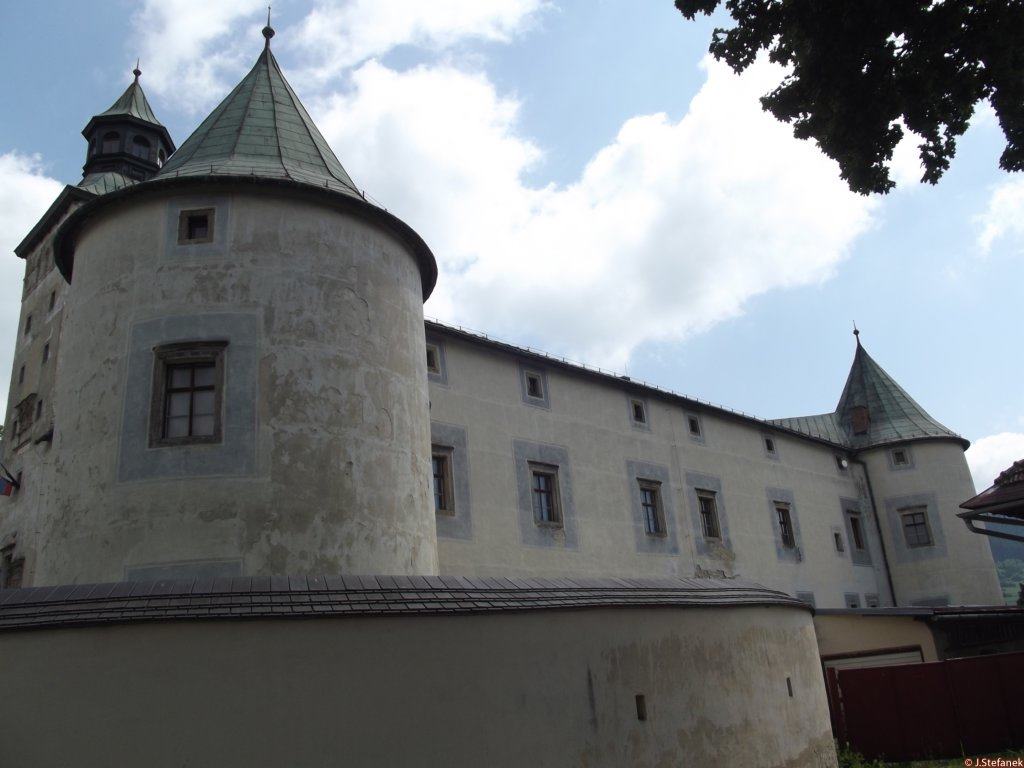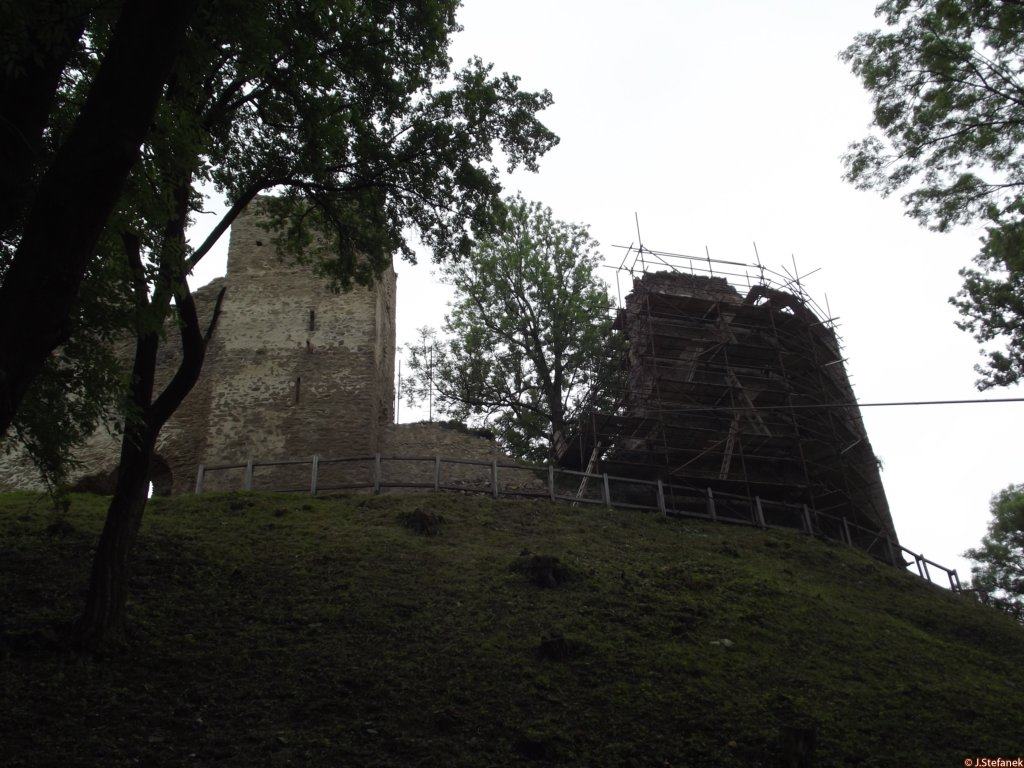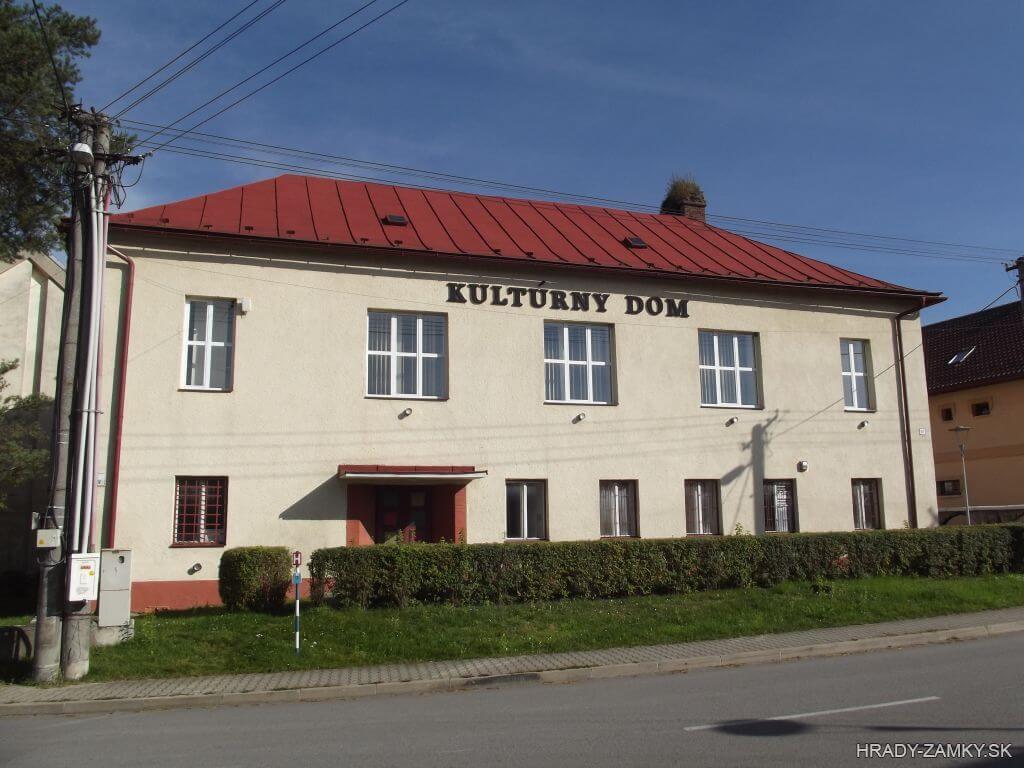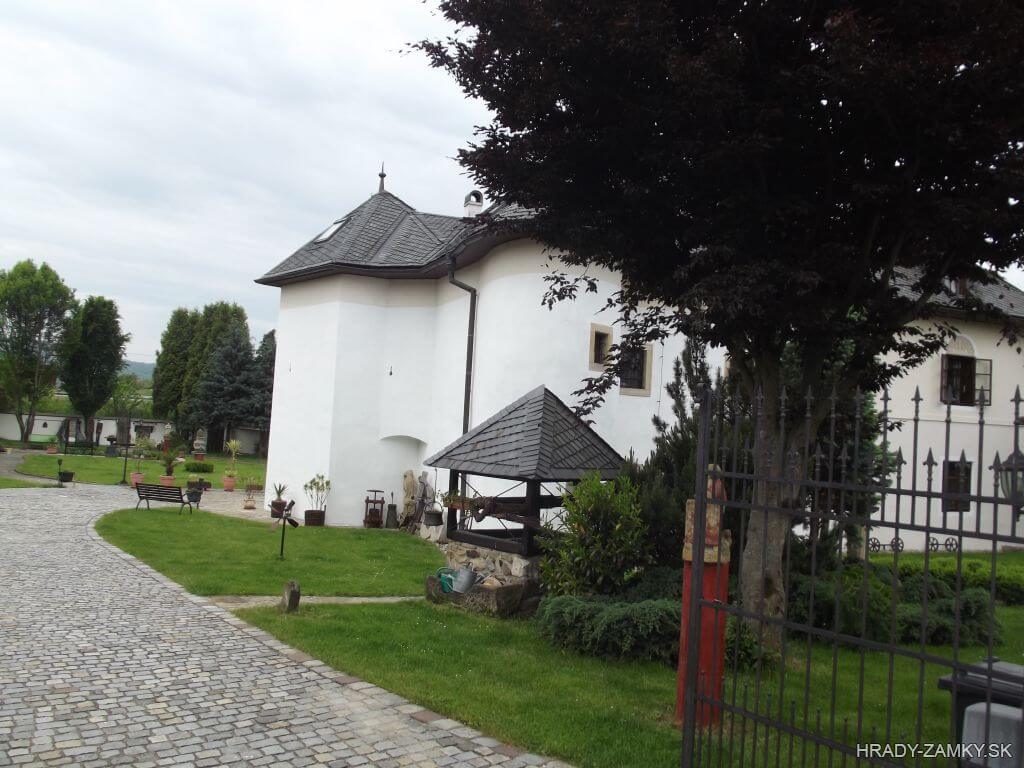Súľov-Hradná
Súľov-Hradná Žilina county Slovakia
manor, mansion
Súľov-Hradná
Súľov-Hradná Žilinský kraj Slovakia
kaštieľ
Renaissance manor house in the village of Súľov-Hradná, which lies in the Súľov basin in the central part of the Súľov Hills, in the south-eastern outcrop of the Bytča district
Renesančný kaštieľ v obci Súľov-Hradná, ktorá leží v Súľovskej kotline v centrálnej časti Súľovských vrchov, v juhovýchodnom výbežku okresu Bytča
Previous names
Hradna, Gradna, Súlowské Hradno
Roads
The manor is located in the southern part of the village Súľov-Hradná, called Hradná. After entering the village, we continue straight on until we come to a turn to the left. We turn onto a narrow path that passes along the bell tower and after a while we turn right, where we can park. The manor house is only a few meters away.
Kaštieľ sa nachádza v južnej časti obce Súľov-Hradná, zvanej Hradná. Po vstupe do obce pokračujeme stále rovno, až prídeme k odbočke vľavo. Odbočíme na úzku cestu, ktorá prechádza popri zvonici a po chvíli odbočíme vpravo, kde môžeme zaparkovať. Kaštieľ je odtiaľ vzdialený len pár metrov.
Description
The Renaissance manor house was built according to the model of the Thurzo manor in Bytča. It is a one-storey building with an originally square floor plan with a smaller courtyard and two circular corner towers. The round towers originally had onion-shaped roofs. To this day, only the northwestern tract with towers and the part of the eastern tract where the depot is located have been preserved. The manor house was severely damaged at the turn of the 19th and 20th centuries by its various uses. The building was divided between several owners and everyone treated their part as they wanted. The worst was the northern and eastern wings, where family houses were built. The northwest corner was preserved in the perimeter, but the roof was damaged. The most preserved part is the southwest corner. The manor house had an entrance through a gate, which stood at a nearby bell tower.Remains of shambranos have been preserved on some windows. The windows of the round tower and the portal of the west façade had stucco framing with abstract ornamentation. In the middle of the western facade in front of the portal was a stone staircase. The building is finished with a newer cornice, under the windows was an S-shaped sgraffito. There are flat ceilings in the rooms, only in the basement there is a barrel vault with lunettes.
Renesančný kaštieľ bol postavený podľa vzoru thurzovského zámku v Bytči. Je to jednoposchodová budova s pôdorysom obdĺžnika s menším štvorcovým dvorcom a dvomi kruhovými nárožnými vežami. Okrúhle veže mali pôvodne cibuľovité strechy. Dodnes sa zachoval len severozápadný trakt s vežami a časť východného traktu, kde je voziareň. Kaštieľ bol značne poškodený na prelome 19. a 20. storočia jeho rôznorodým využitím. Jednotná zástavba bola rozparcelovaná medzi viacero majiteľov a každý si so svojou časťou nakladal ako chcel. Najhoršie dopadlo severné a východné krídlo, kde boli postavené rodinné domy. Severozápadné nárožie sa zachovalo v obvode, no bola poškodená strecha. Najviac zachovanou časťou je juhozápadné nárožie. Do areálu kaštieľa sa vchádzalo bránou, ktorá stála pri neďalekej zvonici.Na niektorých oknách sa zachovali zvyšky šambrán. Okná okrúhlej veže a portál západnej fasády mali štukové orámovanie s abstraktnou ornamentikou. V strede západnej fasády pred portálom bolo kamenné schodisko. Stavba je zakončená novšou rímsou, pod oknami bolo esovité sgrafitó. V miestnostiach sú rovné stropy, iba v suteréne je valená klenba s lunetami.
History
In the 16th century, Pavol Akay acquired property in Hradná by marrying Katarína, daughter of Sebastián Sirmiensis of Súľov. Since then, the family, originally from the Veszprém capital, has written an adjective from Aka and Hradná. In 1591, an abandoned manor house in Hradná is mentioned, which probably did not suit the Akay family, and therefore they had a new seat built in Hradná sometime around 1600. The Renaissance manor house was built according to the model of the Thurz manor house in Bytča, although with smaller dimensions.
A written mention from 1781 mentions the manor house in connection with a meeting of the heirs of Štefan Akay, who shared the individual parts of the manor house, while the court of the manor house was to be common. In the middle of the 19th century, the Akay family probably rented the manor for financial reasons. One of the tenants in 1851 was a certain Mr. Keler.
The manor house experienced its great prosperity in the time of Mária Madocsányi, the wife of the main mayor of the Trenčín capital, Pavel Madocsányi. During her time, the manor house had a nicely landscaped garden and banquets were held here. The manor house was entered through a gate, which stood at a nearby bell tower. A pond with a fountain, fish and aquatic plants was maintained in front of the manor. Beer was even brewed in the manor. Maria died in 1894 and the manor house was acquired by her nephew Pavol Andaházy, who destroyed the ornamental garden for unknown reasons.
Later, the manor belonged to Karol Alexander, Dezider Súľovský and Tatrabanka. It was bought from her by Vincent Mičura, who carved old linden trees around the manor. The manor house was repaired inappropriately, it even demolished some walls. From 1928 to 1930, the manor house was taught. The first intervention in the area of the manor was the shift of the Hradnianka river during its regulation in 1930, which changed the whole area in front of the manor. In 1937, the inhabitants of the village bought the manor from Mr. Mičura in parts. The division took place in 1944 and some of the new owners also lived in the manor house.
In addition to housing, the manor house served in the middle of the 20th century as the store, in the large hall were held village parties. It became a national cultural monument in 1963.
Even today, the manor has several owners and part of it is still inhabited, but no one cares about the manor and is falling into disrepair.
V 16. storočí získal Pavol Akay majetky v Hradnej sobášom s Katarínou, dcérou Sebastiána Sirmiensisa zo Súľova. Odvtedy si rod, pôvodom z Vesprémskej stolice, písal prídomok z Aky a Hradnej. V roku 1591 sa spomína opustená kúria v Hradnej, ktorá Akayovcom už zrejme nevyhovovala, a preto si dali v Hradnej niekedy okolo roku 1600 postaviť nové sídlo. Renesančný kaštieľ postavili podľa vzoru thurzovského kaštieľa v Bytči, i keď s menšími rozmermi.
Písomná zmienka z roku 1781 spomína kaštieľ v súvislosti so stretnutím dedičov Štefana Akaya, ktorí si podelili jednotlivé časti kaštieľa, pričom dvor kaštieľa mal byť spoločný. V polovici 19. storočia Akayovci kaštieľ pravdepodobne z finančných dôvodov prenajímali. Jedným z nájomcov v roku 1851 bol aj istý pán Keler.
Svoj veľký rozkvet zažil kaštieľ za čias Márie Madocsányi, manželke hlavného župana Trenčianskej stolice, Pavla Madocsányiho. Počas jej vlastníctva mal kaštieľ pekne upravenú záhradu a konali sa tu hostiny. Do areálu kaštieľa sa vchádzalo bránou, ktorá stála pri neďalekej zvonici. Pred kaštieľom bol udržiavaný rybník s fontánou, rybami a vodnými rastlinami. V kaštieli sa dokonca varilo aj pivo. Mária zomrela v roku 1894 a kaštieľ získal jej synovec Pavol Andaházy, ktorý z neznámych dôvodov okrasnú záhradu zlikvidoval.
Neskôr panstvo patrilo Karolovi Alexandrovi, Deziderovi Súľovskému a aj Tatrabanke. Od nej ho odkúpil Vincent Mičura, ktorý povytínal stáročné lipy okolo kaštieľa. Kaštieľ nevhodne opravil, niektoré múry dokonca zbúral. V rokoch 1928 až 1930 sa v kaštieli vyučovalo. Prvým zásahom do areálu kaštieľa bolo posunutie toku riečky Hradnianky pri jej regulácii v roku 1930, čím sa zmenil celý priestor pred kaštieľom. Obyvatelia obce si v roku 1937 od pána Mičuru kaštieľ po častiach odkúpili. K rozdeleniu došlo v roku 1944 a niektorí z nových majiteľov v kaštieli aj bývali.
Okrem bývania kaštieľ slúžil v polovici 20. storočia prevádzke obchodu, vo veľkej sále sa konali dedinské zábavy. Národnou kultúrnou pamiatkou sa stal v roku 1963.
Aj v súčasnosti má kaštieľ viacerých vlastníkov a jeho časť je stále obývaná, no o kaštieľ sa nik nestará a chátra.
Myths and legends
There are no myths available.
K tomuto objektu nie sú dostupné žiadne povesti
Useful information
The manor is partly used for housing, inaccessible to the public
Kaštieľ je z časti využívaný na bývanie, neprístupný verejnosti
Nearby castles
